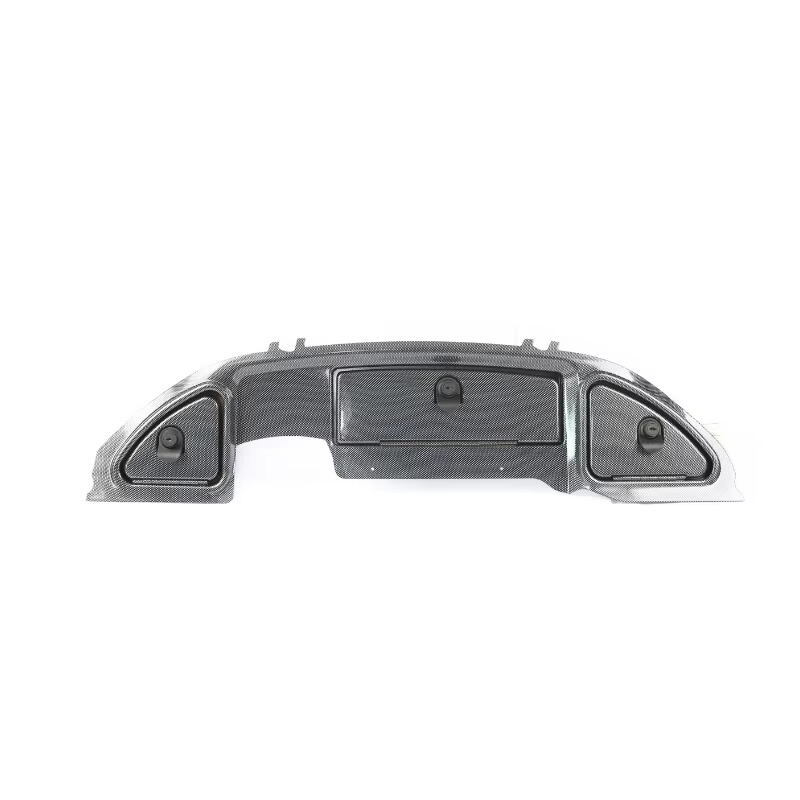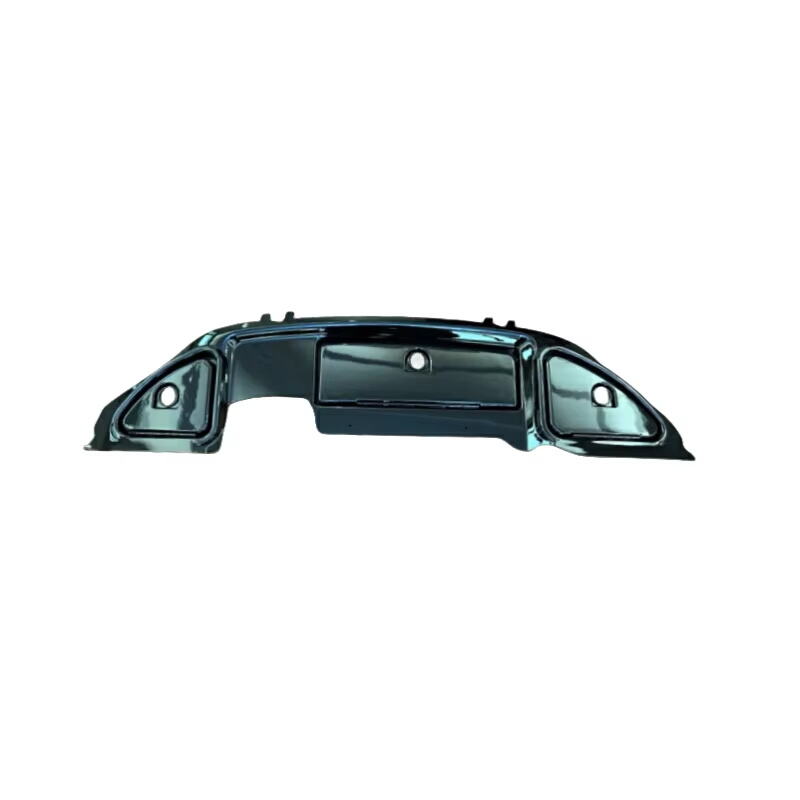The Advantages of a Digital Dashboard for Modern Vehicles
In recent years, the dashboard has evolved from a simple collection of dials and gauges to a more sophisticated digital interface. Digital dashboards are now becoming standard in many modern vehicles, offering a host of benefits over traditional analog displays. These high-tech interfaces provide drivers with real-time information, customizable displays, and enhanced safety features. In this blog, we will explore the reasons why digital dashboards are better for modern cars, from improved functionality to a more immersive driving experience.
Enhanced Customization and User Experience
Personalized Display Options
One of the key advantages of a digital dashboard is its ability to be customized to suit the driver's preferences. Unlike traditional dashboards with fixed, analog gauges, digital dashboards allow you to adjust the display layout, colors, and even the types of information shown. This means drivers can have their speed, fuel levels, navigation, and other data displayed in a way that is most comfortable and intuitive for them.
Customizability extends to the control of themes, with some digital dashboards allowing users to switch between different visual styles or even display information that is most relevant to their driving conditions. Whether you're a performance driver who wants to see engine performance or a commuter who needs quick access to navigation, a digital dashboard can adapt to your needs, offering a level of convenience and personalization that analog dashboards simply can't provide.
Improved Readability and Clarity
A digital dashboard significantly enhances the readability of vehicle data. With high-definition displays, information is shown clearly and brightly, even in direct sunlight or dim conditions. Unlike analog dials, which can sometimes be difficult to read, especially when the lighting conditions are poor, a digital dashboard offers sharp text, numbers, and icons, making it easier for drivers to access important data at a glance.
The ability to adjust font sizes and contrast on a digital dashboard allows for better visibility, particularly for those with poor eyesight or those who may struggle with traditional displays. This results in a safer, more comfortable driving experience.

Real-Time Information and Enhanced Functionality
Access to Real-Time Data
A major advantage of upgrading to a digital dashboard is the ability to display real-time data. This can include not only essential information like speed, fuel efficiency, and engine temperature, but also more dynamic data such as traffic conditions, upcoming turns, or even vehicle diagnostics. This level of interactivity allows the driver to receive timely updates and take action as needed, enhancing the overall driving experience.
For example, some digital dashboards integrate with your vehicle’s sensors to provide live feedback on tire pressure, oil temperature, and battery health. This enables drivers to identify potential issues early, preventing breakdowns and improving the vehicle’s overall reliability. In vehicles with advanced driver assistance systems (ADAS), digital dashboards can also provide real-time warnings for lane departure or proximity to other vehicles, further improving safety.
Integration with Infotainment and Navigation Systems
Digital dashboards are often seamlessly integrated with a vehicle’s infotainment and navigation systems. This allows for a more unified driving experience, where information about your route, media, and vehicle status is all available on one screen. Drivers no longer need to switch between different screens or devices to check their route, play music, or adjust settings. With a digital dashboard, everything is in one place, creating a cleaner, more intuitive interface.
The integration with navigation systems also means that digital dashboards can provide real-time traffic data, alternative route suggestions, and even upcoming landmarks or hazards, allowing the driver to make better-informed decisions while on the road.
Increased Safety Features
Enhanced Driver Assistance Integration
The safety benefits of a digital dashboard are particularly significant, especially with the rise of advanced driver assistance systems (ADAS). These systems include features such as lane-keeping assist, adaptive cruise control, and automatic emergency braking. Digital dashboards allow these systems to be displayed prominently, with warnings and alerts directly visible to the driver, ensuring that important information is never missed.
For example, a digital dashboard might show a visual representation of the car's surroundings, highlighting potential obstacles or vehicles in blind spots. This visual information can be combined with auditory alerts, making the driving experience both safer and more intuitive.
Real-Time Warnings and Alerts
One of the key benefits of a digital dashboard is its ability to alert the driver to issues in real-time. Whether it's a low fuel warning, a potential engine problem, or a hazard in the road ahead, digital dashboards can immediately notify the driver with clear visual indicators and alerts. This can help prevent accidents, reduce stress, and ensure that the driver is always aware of the vehicle's current status.
Additionally, digital dashboards can show multiple warning messages at once, with color-coded alerts that allow drivers to prioritize issues. For instance, an immediate safety warning such as low tire pressure might be shown in red, while less critical notifications like an upcoming oil change could be displayed in yellow.
Streamlined Design and Reduced Clutter
Cleaner, More Minimalist Layout
A digital dashboard can dramatically reduce clutter in the car, creating a more minimalist, aesthetically pleasing interior. Traditional dashboards often include numerous dials, buttons, and displays that can be overwhelming and difficult to navigate. A digital dashboard streamlines the layout, replacing analog gauges with digital ones, and sometimes even eliminating physical buttons altogether.
This cleaner design not only looks more modern and stylish but also improves functionality by making all information available on a single screen. With fewer physical controls, there’s also less to go wrong, making the dashboard easier to maintain.
Touchscreen Interfaces and Control Options
Many digital dashboards feature touch-screen interfaces, allowing drivers to interact with the display through simple touch gestures. This makes it easier to control navigation, music, climate settings, and more, all while keeping the interior neat and free of excess switches and buttons. Some systems even allow for voice commands, providing another layer of convenience and safety, as drivers don’t need to take their hands off the wheel to adjust settings.
Future-Proofing Your Vehicle
Technology that Adapts to New Features
Digital dashboards are easily upgradable and can adapt to new technologies. As car manufacturers release software updates and add new features, digital dashboards can be upgraded through over-the-air updates or by visiting a dealership. This makes a digital dashboard a future-proof investment, as it can be updated to support the latest infotainment features, safety systems, and driving modes.
In comparison, traditional analog dashboards are limited in their functionality and require physical replacements or modifications to accommodate new features. By opting for a digital dashboard, you're ensuring that your vehicle remains compatible with future technological advancements, making it a long-term investment.
FAQs About Digital Dashboards
What are the main advantages of a digital dashboard over traditional ones?
Digital dashboards offer improved customization, better readability, real-time data access, and enhanced integration with vehicle systems, making them more user-friendly and functional than traditional analog dashboards.
How do digital dashboards improve safety?
Digital dashboards improve safety by providing real-time warnings, integrating with driver assistance systems, and offering better visibility of critical information such as speed and tire pressure.
Can I upgrade my vehicle to a digital dashboard?
Upgrading to a digital dashboard depends on your vehicle model and the compatibility of the system. Some vehicles allow for aftermarket digital dashboards, while others may require a professional installation.
Are digital dashboards expensive to maintain?
While digital dashboards can be more expensive initially, they often require less maintenance than traditional dashboards due to fewer moving parts and simpler layouts. However, if any component of the digital system fails, repair costs may be higher.

